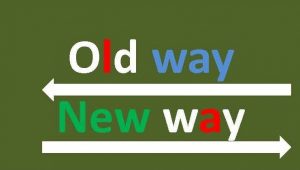
We design products, solve problems, define value propositions, incorporate storytelling in our marketing efforts but we also should design the way we think.
We are not conscious of our mental models but our values are the base of our believes. These ones will determine our thoughts and these will make real our feelings. That’s why is so important how we think as individuals and what happens inside our heads.
As individuals we have different levels of competence and to be great designers of our thoughts we need to achieve unconscious competence. This will require to iterate with our prototypes and tests until we can achieve that excellence.
One of our main method of communication has been telling stories. Along our history, since ancient times, human beings told stories even through paintings. Stories can put your brain to work and can influence in our decisions.
Anything you’ve experienced, you can get others to experience the same. Or at least, get their brain areas that you’ve activated that way active too. Our stories make up 65% of our conversations.
In a 2006 study published in the journal NeuroImage, researchers in Spain asked participants to read words with strong odor associations, along with neutral words, while their brains were being scanned by a functional magnetic resonance imaging (fMRI) machine. When subjects looked at the Spanish words for “perfume” and “café” their primary olfactory cortex lit up; when they saw the words that mean “silla” and “llave” this region remained dark.
We link up metaphors and literal happenings automatically. Everything in our brain is looking for the cause and effect relationship of something we’ve previously experienced.
When we face with business problems or other kind of business situations, we usually face with design challenges where design thinking can help us very much.
Storytelling is one of the most powerful tools for achieving immediate results and it will be very useful in our Design Thinking activities. Leaders can use it to turn dreams into actions and finally getting goals. When we tell stories, we must be convinced about them, we must feel them as own to share with others with authenticity. A story is the only way to activate parts in the brain so that a listener turns the story into their own idea and experience.
It is also very important to tell the stories in different circumstances in different ways. You cannot repeat the same story without adapting to the moment and the audience.
We like that others adopt our stories as their own. This is the feeling you have when a friend tells you a story and a couple of weeks later you tell him the same story as if it was your great idea. This is the best way how to get people on board with your ideas.
Peter Guber, film producer, defines this very well in “The Four Truths of the Storyteller”, when he considers The Truth of the Teller, The Truth of the Audience, The Truth of the Moment and The Truth of the Mission.
The frontal cortex area of your brain is responsible to experience emotions and only is activated with words and sentences that move you. This is not merely an opinion; this was many times researched and proved that metaphors have a bigger impact on individuals than more common words.
You should remember all these concepts each time you create your own story.





